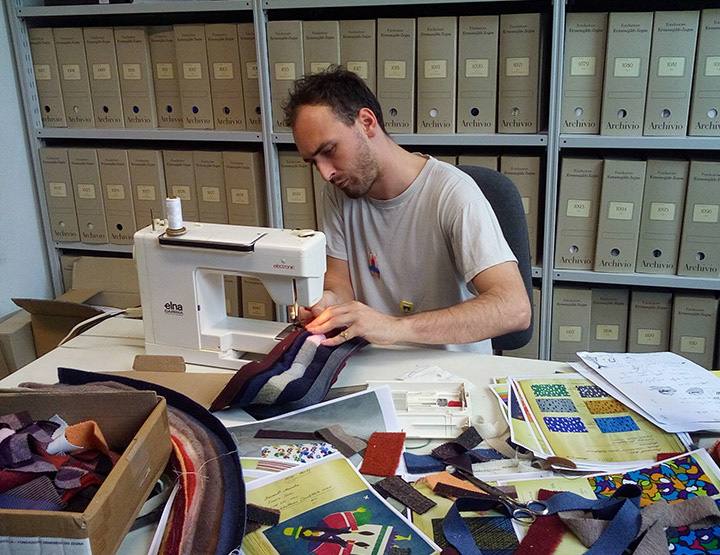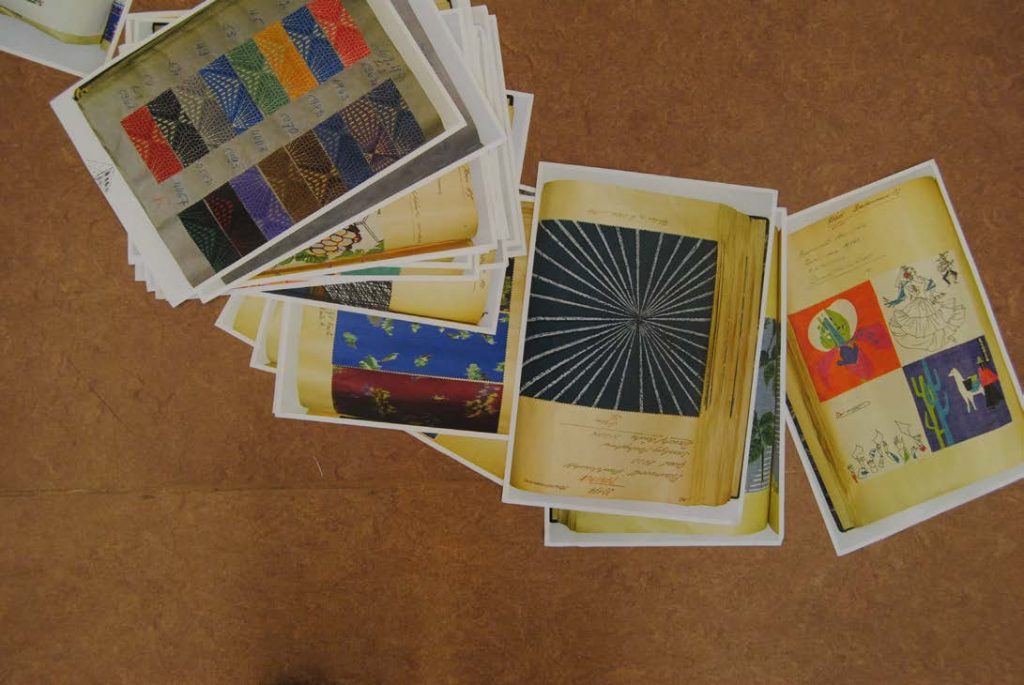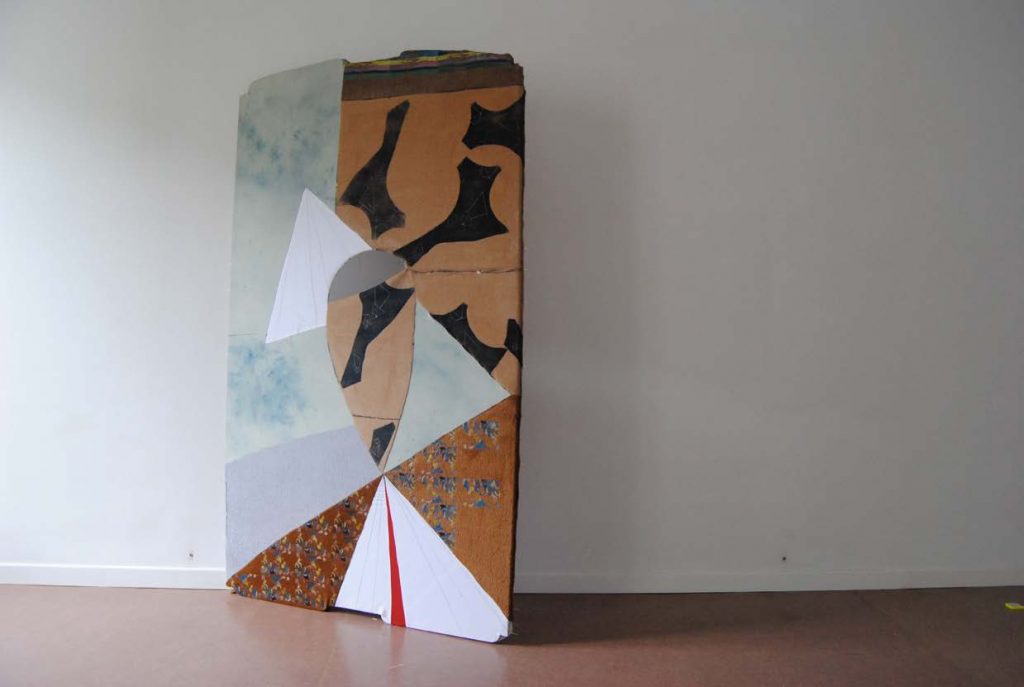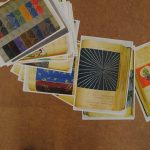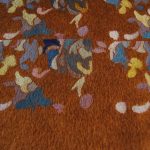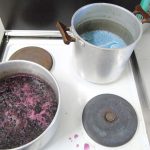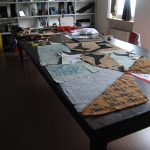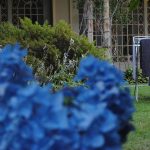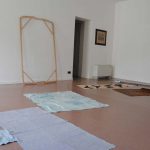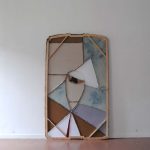Text and images by Matteo Valerio (MA Fine Art, Central Saint Martins)
The residency at Fondazione Zegna, Italy has been one of the best professional experiences I have had. The opportunity of being included in such a big collaboration is an unexpected and new development for my practice. Everything in Trivero is still reconsidered in my imagination, the environment of the residency is difficult to describe in words.
The first day I met Anna Zegna the president of Fondazione Zegna, Matteo Ferrario and Donatella Basla. I presented my proposal and I had a curatorial response regarding my project and how to organize the research-visit time in relation to the physical production of some works. Considering that the Archivio Zegna, Lanificio Zegna, Oasi Zegna are very considerable and historically embedded realities, we decided to take advantage on the research on Heberlein and on realising the complexity of Zegna group. While we agreed that the completion of the physical objects can be developed further at the specialized workshops at Central Saint Martins. The final result will be exhibited from May 2017 at Casa Zegna, included in an exhibition concerning Camelids.
During the residency they gave me few options on where to set my studio and so I chose to work in Casa Zegna, close to the archivist Donatella Basla, because she is the main expert of the Heberlein’s archive; she helped me in filtering the huge amount of prints from the 2200 volumes within the archive. The theme of the residency drove me to focus on searching images related somehow to Perù and Bolivia. We spent some days selecting around 30 prints, most of them from the 50’s. From my experience it was very difficult to split up continuously the Heberlein archive into coherent categories. For this reason it was really pleasant and unpredictable to turn page.
I understood that being perfectly contemporary is knowing that the fundamentals that make a difference are the understanding and the respect of the location with a regenerative and collaborative enhancement of the environment and particular attention for research. All these elements entwined with a huge passion, produce a product that after the technological but artisanal process create an embedded and expressive meaning in the product itself. Through the fabrics I was able to comprehend the meaning behind the tactile sensation, the colour and the design.
During this whole process I was trying to understand the procedure needed to complete a piece work with of high quality. I started by engraving the wood for printing some patterns referred to Heberlein on alpaca fabrics. While searching for the materials I needed to make the frame and the dye needed to colour some alpaca wool fabrics for the first piece. I had the fortune of being a guest in an beautiful organic Agriturismo (Farm) Oro di Berta where I asked if I could use some very old chestnut wood they had in the tavern for the frame and I asked them some blueberries for the dye. I wanted all the material I used to come from that place. Everything being incorporated of that place.
Depending on what I needed to do I could use different spaces: for making the frame I worked in the mechanical laboratory, for dying I used the kitchen and for cutting the fabrics a huge table in casa Zegna.
During the second week I had the fortune of being invited in Milan to meet the fashion designers of Ermenegildo Zegna along various appointments of the day, different moments of the fashion production. It was intense, and impressive. The process and logistics behind each decision are very interesting to me as I am investigating which are-aren’t the boundaries between art, design and crafts.
In fact I had the fortune of meeting also the textile head designer who intrigued me in this sense; the artisanal approach to the drawing of the fabrics and how the process of production in itself is often inspiring and suggesting new ideas. The knowledge of the variables of each phase that can provoke infinite creative possibilities is something I find really important also in my work. It becomes a fluid intrinsic relation from the idea to the product. This process in my case often finishes as a surprise.
I always used many fabrics in my practice, if firstly I choose it for it’s functional properties lately I am interested in it’s intrinsic history. Each material used in relation to others create a dialogue between different histories that from my point of view are part of the narrative and concept of a piece. In this case were I worked in relation and with the community of Trivero, this collaboration is represented by each material reinterpreted through Heberlein. So much that the concept of the pieces are the materials in itself. The prints helps to intemperate the “ history” and the provenience of the materials and it’s transformations through imagination. Also as each material change function becoming a painting and each print is recalling the place were the alpaca were shear (focusing especially on Perù and Bolivia), it is not showing a defined reference but an open imaginary creating a place-non place in an undefined dimension; ancestral and tribal.
Apart from the research, the target of the residency was to make at least a sample of one of the 4 paintings proposed. The last 3 days I could concentrate totally on that and I could finish the piece for a final curatorial critic response by Anna Zegna, Matteo Ferrario and Donatella Basla, they suggested me which are the details to increase and what the work meant for them. Therefore in the next period I am going to continue this body of work reinforcing the original idea even more. The knowledge taught there as already been useful in my practice, in fact I used some patterns inspired by Heberlein in a recent work made for another residency in collaboration with Sofia Bonato at Dolomiti Contemporanee. Due to this consideration, I now I have a different eye when choosing a fabric, now I have a parameter of the best, and this is very helpful for me, so that I can use every textile in relation to its value, also under social aspects.
I really appreciate the hospitality and availability of all the people I met. I would like to thank every one whom collaborated on this project; With special thanks to Lucy Orta, Anna Zegna, Donatella Basla, Matteo Ferrario, Camilla Palestra and University of the Arts London Postgraduate Community.
Fondazione Zegna interviewed Matteo at the start of his residency
Read the artist interview here
View the AER 2016 Residency Programme Candidate Announcement
AER 2017 Residency Programme – Open for Applications
Image Gallery:
- Image courtesy of Matteo Valerio
- Image courtesy of Matteo Valerio
- Image courtesy of Matteo Valerio
- Image courtesy of Matteo Valerio
- Image courtesy of Matteo Valerio
- Image courtesy of Matteo Valerio
- Image courtesy of Matteo Valerio
- Image courtesy of Matteo Valerio
- Image courtesy of Matteo Valerio
- Image courtesy of Matteo Valerio
- Image courtesy of Matteo Valerio
Background – Art for the Environment Residency Programme
In 2015, internationally acclaimed artist, UAL Chair of Art for the Environment Professor Lucy Orta, Centre for Sustainable Fashion launched the Art for the Environment Residency Programme (AER), in partnership with residency programmes across Europe. Applicants can choose from a two to four week period at one of the hosting institutions, to explore concerns that define the twenty-first century – biodiversity, environmental sustainability, social economy, human rights – and through their artistic practice, envision a world of tomorrow.


